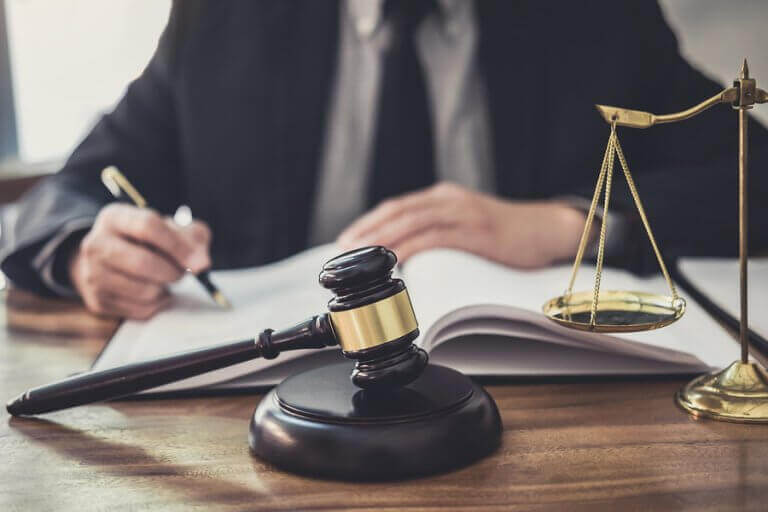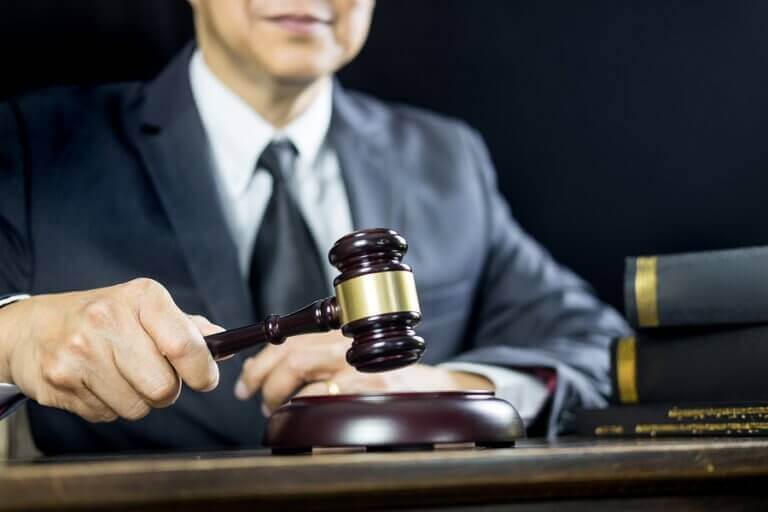The Relationship Between Private Law and Sports

The relationships between public law, private law and sports, continues to be a very complex subject. In fact, we often see the overlap or interference between public and private law. Moreover, how these regulations cause conflicts between sport governing bodies and public authorities.
These clashes often lead back to the question of how much the discipline can actually be governed by specific laws? After all, it’s not a mere coincidence that sports law has been gaining strength over the last few years.
More and more professionals are choosing to specialize in this matter. Beyond the enticing opportunity of practicing law in the sports field, this shows the need for properly trained lawyers to help resolve and prevent those types of disputes. It would also help to have more transparency in sports justice.
Private and public law: definition and differences
Private law is a branch of statutory law. Its main function is regulating the different relationships and activities that involve private citizens.
This private version of the legal world leans on two fundamental principles to function. The first one is the equality of individuals before the law; the second one is our autonomous free will. It’s important to remember that statutory law is the one expressed explicitly in legal texts and the existing laws of each society.
This makes it different from public law, which focuses on the relationships and activities performed by the state. However, this public branch of the law can also be in charge of regulating those situations in which public administration acts as a private citizen and not as the regulatory State.
In more practical terms, we can say that private law is in charge of the situations that involve two or more private citizens; some examples are divorces or disputes involving the assets of a third party.

On the other hand, public law handles the actions and competencies that pertain to the state or public administration. This difference has existed since the Roman empire, and it’s been fundamental to establish the current legal structures.
Relationship between public law, private law, and sports
Broadly speaking, sports tend to have a closer relationship with private law. A large part of the associations and sports clubs are private organizations.
On top of that, most relationships in the sports world happen between private entities. It may be between two people, an athlete, and a company, brand or association, or between two or more parties of the private sector.
However, there are two big problems that complicate the relationship between private law and sports. The first one is that, at least in Spain, sports law is pretty much nonexistent as a regulatory framework with autonomy.
Its activities and structures are intrinsically related to the regulations and decisions that come from associations and sports organizations such as:
- Olympic charter.
- Regulations and disciplinary codes of national (RFEF or RFEB) and international federations (FIFA or FIBA).
- Bylaws of sports clubs and leagues.
- Decisions from sports arbitration tribunals (TAS) or internal committees.
Now let’s take a look at the second and more important issue. This is in practice, that the relationships and actions within the sports field also involve national and autonomous laws and the regulations that derive from public administrations.

Employment relationship and contract
If we take an example of the contract between an athlete and a sports club, we can see that it’s a direct relationship between two private entities. All of this falls under the Royal Decree 1006/1985, which regulates the professional practice of Spanish athletes.
Besides that, the Spanish Workers Statute comprehends the employment relationship of athletes and includes it under the special regimes category. Therefore, it’s not strange for public law to intervene frequently and solve conflicts within the sports field.
Lastly, it’s also important to not lose sight of the fact that sports aren’t a private field activity. They should really be a right for all citizens. To achieve this, the state plays a key role in the promotion of public policies and regulations that guarantee access to physical activities.
The relationships between public law, private law and sports, continues to be a very complex subject. In fact, we often see the overlap or interference between public and private law. Moreover, how these regulations cause conflicts between sport governing bodies and public authorities.
These clashes often lead back to the question of how much the discipline can actually be governed by specific laws? After all, it’s not a mere coincidence that sports law has been gaining strength over the last few years.
More and more professionals are choosing to specialize in this matter. Beyond the enticing opportunity of practicing law in the sports field, this shows the need for properly trained lawyers to help resolve and prevent those types of disputes. It would also help to have more transparency in sports justice.
Private and public law: definition and differences
Private law is a branch of statutory law. Its main function is regulating the different relationships and activities that involve private citizens.
This private version of the legal world leans on two fundamental principles to function. The first one is the equality of individuals before the law; the second one is our autonomous free will. It’s important to remember that statutory law is the one expressed explicitly in legal texts and the existing laws of each society.
This makes it different from public law, which focuses on the relationships and activities performed by the state. However, this public branch of the law can also be in charge of regulating those situations in which public administration acts as a private citizen and not as the regulatory State.
In more practical terms, we can say that private law is in charge of the situations that involve two or more private citizens; some examples are divorces or disputes involving the assets of a third party.

On the other hand, public law handles the actions and competencies that pertain to the state or public administration. This difference has existed since the Roman empire, and it’s been fundamental to establish the current legal structures.
Relationship between public law, private law, and sports
Broadly speaking, sports tend to have a closer relationship with private law. A large part of the associations and sports clubs are private organizations.
On top of that, most relationships in the sports world happen between private entities. It may be between two people, an athlete, and a company, brand or association, or between two or more parties of the private sector.
However, there are two big problems that complicate the relationship between private law and sports. The first one is that, at least in Spain, sports law is pretty much nonexistent as a regulatory framework with autonomy.
Its activities and structures are intrinsically related to the regulations and decisions that come from associations and sports organizations such as:
- Olympic charter.
- Regulations and disciplinary codes of national (RFEF or RFEB) and international federations (FIFA or FIBA).
- Bylaws of sports clubs and leagues.
- Decisions from sports arbitration tribunals (TAS) or internal committees.
Now let’s take a look at the second and more important issue. This is in practice, that the relationships and actions within the sports field also involve national and autonomous laws and the regulations that derive from public administrations.

Employment relationship and contract
If we take an example of the contract between an athlete and a sports club, we can see that it’s a direct relationship between two private entities. All of this falls under the Royal Decree 1006/1985, which regulates the professional practice of Spanish athletes.
Besides that, the Spanish Workers Statute comprehends the employment relationship of athletes and includes it under the special regimes category. Therefore, it’s not strange for public law to intervene frequently and solve conflicts within the sports field.
Lastly, it’s also important to not lose sight of the fact that sports aren’t a private field activity. They should really be a right for all citizens. To achieve this, the state plays a key role in the promotion of public policies and regulations that guarantee access to physical activities.
All cited sources were thoroughly reviewed by our team to ensure their quality, reliability, currency, and validity. The bibliography of this article was considered reliable and of academic or scientific accuracy.
- Real Decreto 1006/1985, de 26 de junio, por el que se regula la relación laboral especial de los deportistas profesionales. Extraído de: https://www.boe.es/buscar/doc.php?id=BOE-A-1985-12313
- Real Decreto Legislativo 2/2015, de 23 de octubre, por el que se aprueba el texto refundido de la Ley del Estatuto de los Trabajadores. Extraído de: https://www.boe.es/buscar/act.php?id=BOE-A-2015-11430
This text is provided for informational purposes only and does not replace consultation with a professional. If in doubt, consult your specialist.








